IN THE BEGINNING
On June the 14th, 1928, Ernesto Guevara is born in Rosario, Argentina, to Ernesto Guevara Lynch and Celia de la Serna. “Che” was a nickname he would get later in life. His parents were left-leaning middle class professionals of Spanish and Irish ancestry.
Che’s parents encouraged him, and his 4 younger siblings, to be curious about the outside world, and exposed them to a variety of political ideas and philosophies. The family home was stacked with thousand of books, and Che became an avid reader.
He enjoyed the poetry of Walt Whitman, and the classic works of a diverse group of authors, from Karl Marx and Jawaharlal Nehru to Franz Kafka and HG Wells. He would later discover Latin American writers such as Jorge Icaza and Miguel Asturias.
ACADEMICS
At school he was a very good student. He also enjoyed Chess, and played in local tournaments from the age of 12. Despite suffering from Asthma, Che was a superb athlete and swimmer. His favourite sport was Rugby Union, in which he played the position of Fly half.
Guevara’s schoolmates described him as incredibly intelligent, charming and self confident. He had strong political opinions from a young age, in addition to a clear sense of social justice and compassion for the poor and downtrodden. In his mid teens however, Che’s main passion was still Rugby. He saw his Asthma as simply a challenge that would need to be overcome.
In 1948, he went to the University of Buenos Aires to study Medicine. He decided to focus on his studies rather than join his fellow students in political activism against the Peron Government. He felt he would be in a better position to help people as a Doctor or Medical Researcher.
Recently declassified CIA papers patronisingly described Che as “fairly intellectual for a Latino”.
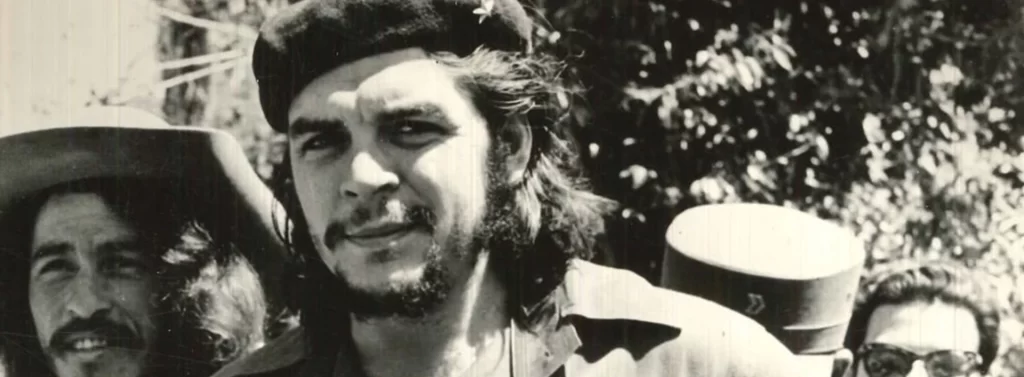
THE MOTORCYCLE JOURNEYS
In his spare time, Che often rode his motorbike around town, occasionally taking some long journeys through the Argentine countryside. He also did a short stint as a nurse on board several Argentinian merchant marine freighters and an oil tanker. But it was his first journey across International borders that changed him forever.
In 1951, he took a 1 year hiatus from University. During this period his worldview was radically influenced by a 9 month motorbike journey around the South American continent, with his friend, Alberto Granado. The trip took them from Argentina to Chile, Peru, Ecuador, Colombia, Venezuela and Panama.
They worked some odd jobs as labourers, and made many friends along the way. Che was enormously impressed by the passion and solidarity of the people, even though they had very little. In Peru, Che even served as a medic in a leper colony.
He kept a diary of the adventure, which was published in 2003, and became a best seller (The movie version was made a year later). Guevara was also incredibly appalled by what he saw on his journeys. The poverty, disease and injustice throughout the continent overwhelmed him, and he saw all this suffering as a direct result of American Capitalism.
At the time, many large US Corporations were plundering South America’s natural resources and exploiting its citizens, then taking home the massive profits which resulted. Furthermore, the US Government would strongly support any fascist dictatorship that would allow these Corporations to continue their pillaging.
When Che returned to Buenos Aires after a solo, 20 day visit to Miami, he threw himself back into his studies and graduated in March 1953. By December 1953, he found himself in Central America looking for medical jobs, to supplement his growing political activism.
FIDEL CASTRO
Another significant event which took place in 1953, occurred in nearby Cuba, on the 26th of July. 16 Months earlier, the US backed fascist dictator, Fugencio Batista, had launched a successful military coup, deposing the democratically elected government of President Carlos Prio Socarras.
Former lawyer, Fidel Castro, along with his brother Raul and 136 Anti-Batista rebels, launched an attack on the Moncada barracks in the southeast of the Island. A smaller rebel force stormed the nearby Bayamo barracks. This was the start of the Cuban Revolution. Castro would later name his movement after the date of the invasion – Movimiento 26 Julio.
Unfortunately for the rebels, it was a massive failure, and those that weren’t killed on the battlefield were captured. A handful managed to escape, but most of those captured were executed. Shortly afterwards, more rebels were found and imprisoned, including the Castro brothers.
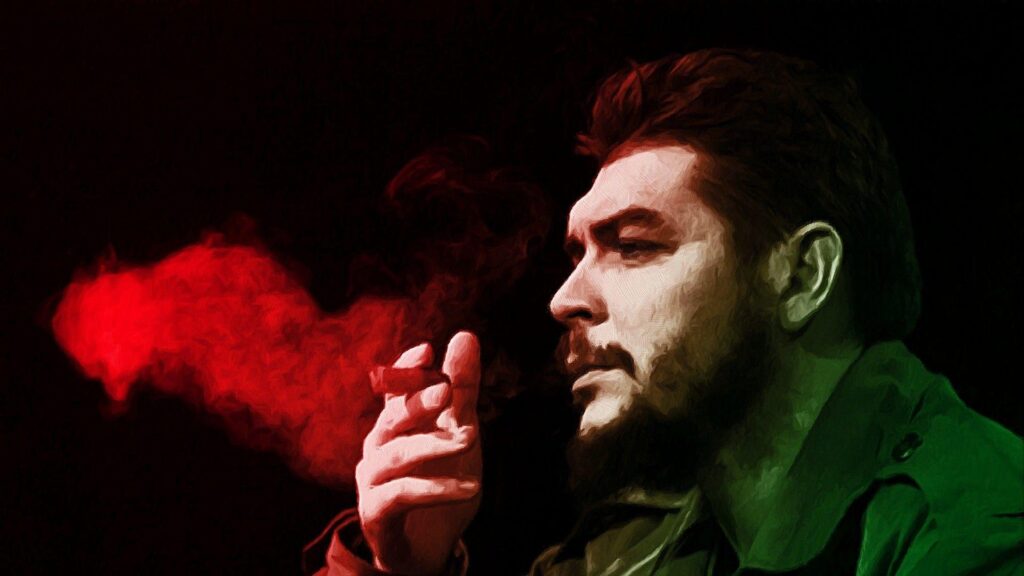
GUATEMALA
By Christmas 1953, Che found himself in Guatemala. At the time, the nation of Guatemala was experiencing only its second democratically elected Government, under the leadership of leftist President Jacobo Arbenz.
In January 1954, Che met a man called Nico Lopez in Guatemala City. Lopez was one of the few survivors of the Moncada campaign, and was still in contact with members of the rebel movement.
Che spent his time in Guatemala further studying Marxism, working more odd jobs until he could land a full time medical position. Over the next few months he would meet up with more Cuban Revolutionaries.
The Arbenz Government set about fulfilling its election promise to renationalise the vast areas of land that had been taken by the US Corporations (like the United Fruit Company), and give the territory back to the local peasants. This provoked an angry response from the powerful United Fruit Company, who successfully lobbied the US Government to have Arbenz overthrown.
In June of 1954, a covert CIA operation, code-named “PBSuccess”, created a coup d’etat in Guatemala. Arbenz was overthrown, and right wing military officer, Carlos Castillo Armas, was installed as dictator.
While Arbenz was in power, Che had decided to make Guatemala his new home. He became more involved with left wing revolutionary politics, and got to know several senior officials in the Arbenz Government. When the campaign to removed Arbenz began, Che joined in the fight to defend him.
The loyalists were not just unsuccessful in defending Arbenz, they now found themselves wanted by the CIA, including Che. Fortunately he made it to the safety of the Argentinian embassy. Once again, this whole experience consolidated his belief that the USA was the enemy of global freedom, and that capitalism was keeping the majority of people in a state of subjugation.
TRAINING IN MEXICO
In 1955, Che found himself in Mexico City, and through his new Cuban friends, was introduced to Fidel Castro. The Castro boys had recently been released from prison, after international pressure was put on the Batista regime. The Castro’s were running a new training camp for revolutionaries and Che signed up immediately.
His experience in Guatemala had convinced him that the only way to defeat imperialism and repression, was through armed struggle.
Despite some run-ins with the The Mexican authorities, the training was successful. Che proved himself a natural leader and an expert at guerrilla tactics, he rose quickly to be Fidel Castro’s 2nd in command.
Che married his first wife, Peruvian economist Hilda Gadea, in September 1955. Just 2 months later the mission began. 82 well trained rebels sailed to the south coast of Cuba, on board a rickety old boat called the ‘Granma’. The second attempt at revolution had begun.
Unfortunately, they all got seasick, and the boat made land in the wrong place. They were quickly found and ambushed by Batista’s troops, and were forced to disperse into the woods. In the end, only 12 survived and escaped to the western highlands. They hid amongst the local peasant population and spent the next few years replanning and rebuilding their campaign.
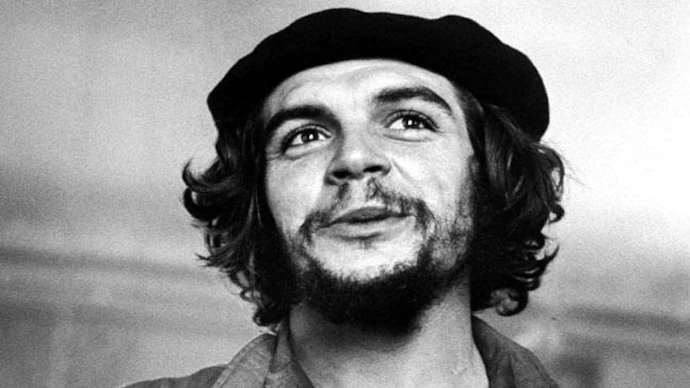
GUERILLA WARFARE
As a commander, Che was tough but fair. He taught his troops not just how to fight, but how to read and write as well. He would shoot defectors and deserters, which gained him a fierce reputation. But several times during the heat of battle, Che put his life on the line to rescue wounded soldiers, and so his subordinates loved him and would’ve done anything for him.
In August 1958, Che lead his column of troops from the Sierra Maestra to Las Villas Province in Central Cuba. By December they had captured the entire western half of the country. Che was instrumental in not just preparing the troops, but in winning public support for the Castro rebels. He established Medical clinics, and even a Radio station called “Rebel Radio”, in order to communicate directly with the Cuban people.
By 1959, the revolution had succeeded. On the second of January, Che Guevara and his men marched triumphantly into Havana. Batista had escaped a day earlier, with around $300 Million which he’d looted from the Cuban economy.
It is this period in the late 50s that Che’s legacy becomes controversial. In addition to shooting traitors during the War, there was also the executions that took place after the War. In the same way that the Allied forces at the conclusion of WWII, tried and executed many high ranking Nazi’s, the new Castro regime did the same with War criminals from the old Batista regime. The trials had the full support of the general public, who wanted retribution for the atrocities they suffered under Batista.
Guevara was in charge of this process, and ordered the executions of many of Batista’s goons. As bad as this sounds, it was not out of step with the time period – and there is no evidence that Che killed anyone who was innocent.
GOVERNING CUBA
The new and inexperienced Cuban government got to work straight away, with Fidel Castro appointed Prime Minister on February 16th 1959. His brother Raul would serve as his Deputy. Che spent most of this period recovering from a nasty asthma related illness. He also revealed to his wife that he was seeing another woman, and so they agreed to divorce.
When the business of dealing with Batista’s old collaborators was done, Castro appointed Che as Head of the Department of Industry of the National Institute of Agrarian Reform (INRA) on October 7. Just a few weeks later, Guevara was also appointed President of the National Bank of Cuba.
Che’s efforts to industrialise Cuba endured a lot of trial and error, and was ultimately unsuccessful. However, his task was made more difficult when the USA announced an embargo on imports from Cuba, which hit the island’s economy hard, especially the previously lucrative Sugar industry.
Che emphasised the Marxist principle that all were equal, that unity was crucial, and that working and earning a wage should be a moral endeavour, not a materialistic one. He encouraged volunteering amongst the population, and he practiced what he preached. He even took a Secretaries wage, despite being a Cabinet Minister.
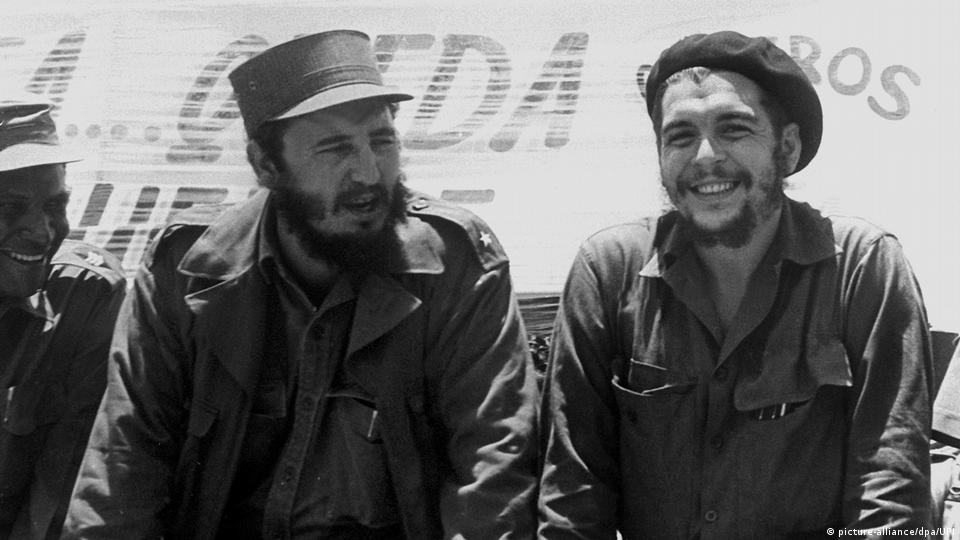
THE NEW MAN
Che spent his weekends doing manual labour all over the country. His fellow volunteers thought he might stop once the media had its photo of him handling a shovel or swinging a pickaxe, but on the contrary, he stayed and contributed until the work was done.
He felt Cuba’s culture had to change and progress, and that Socialism could achieve this transformation. He described the policy as the creation of the “new man” (el Hombre Nuevo). By 1960, Che had travelled across North Africa and the Asia Pacific, establishing new trade relations with countries like Indonesia and Japan.
He had also married his former mistress, Aleida March. At the time of the Cuban Revolution, Che was relatively unknown. Now the name Guevara was starting to spread.
HAVANA 1960
In March of 1960, several explosions took place in Havana harbour, killing 75 Cuban dockworkers. Castro and Guevara blamed the incidents on the CIA. The following day, the leadership held a state funeral for all of the victims.
It was at the memorial service that the now iconic photo of Che Guevara was taken by Cuban photographer Alberto Korda. Ironically, at the time of the photo, all eyes were on Fidel Castro.
But Che’s picture did begin to circulate, especially in the US, where he made it onto the cover of Time Magazine. The American media dubbed him ‘the brains’ behind the Castro regime.
THE SOVIET UNION & OTHERS
As Che Guevara’s profile grew, he gained the attention of the USSR. The Russians saw themselves as the Fathers of world communism, and felt that it was time to welcome Cuba into the family. Che went on an official state visit to Moscow, and was treated like royalty. The exposure propelled him to legendary status, not just throughout the socialist world, but the entire third world also.
While Che was overseas he also visited other Communist states, including China, where he was met by Mao Zedong. In North Korea, he was given a state reception by Kim Il Sang. He finished his trip in Algeria, where he was beloved and treated like a local. Although Che’s revised ideas of communism would differ from the more orthodox ideas of the Soviets, his visit to the Kremlin would establish a close relationship between Cuba and the USSR.
This would later result in the troubling presence of Soviet nuclear missiles in Cuba, pointed towards the USA. This was a move designed to dissuade the US from launching another attack on Cuba. Since America had their own nukes on Russia’s doorstep – in Turkey – the Cubans saw no issue with the new arrangement.
But after taking the World to the brink of Nuclear War, the Soviets agreed to shut down the operation and take the missiles back home. Che saw this reversal as an enormous act of betrayal by the Soviet Union. As time went on, he would come to see the USSR as just another large imperialist, like the USA.

MINISTER OF INDUSTRIES
In February 1961, Che stepped down from his role as President of the National Bank of Cuba. During his time in the role, it was his duty to sign any new currency that had been printed. He did so by just scribbling ‘Che’ at the bottom of the bill – hence dispelling the myth that money was sacred.
After leaving the Bank, he became Minister of Industries. One of his biggest achievements as a senior member of the new government, was the successful implementation of a national literacy plan, which lifted Cuba’s literacy rate from 59% to 96% of the population!
Che also continued to succeed militarily. In April 1961, the Cuban forces that he trained, successfully crushed the invading US forces at the Bay of Pigs. The US troops, made up of mostly Cuban exiles, completely failed in their attempt to remove Castro from power.
Killing Castro was something America would continue to fail at, for the next 5 decades. Fidel Castro ruled Cuba until his retirement in 2011. He died on the 25th of November, 2016 at the age of 90. Castro brought massive improvements in health and education to Cuba, but also established a one party state which ruthlessly suppressed peoples freedom.
TENSIONS
Che continued to work hard for the new Cuba. He also wrote books on Marxism and Guerrilla Warfare, and he engaged in televised debates with some of the more orthodox socialists in Latin America. It wasn’t talked about much, but there was some underlying resentment toward Che, from other high powered officials. Che himself became frustrated with the Castro governments new incentive driven economic policy, and its continued reliance on Moscow.
In December of 1964, Cuba is invited to speak at the United Nations in New York. Che was given the honour, and delivered one of the most powerful speeches ever made before the general assembly, and subsequently received a rousing ovation. He denounced the racism and economic imperialism of the USA and praised the people’s revolutionary movement, which was becoming a global phenomenon.
Che left New York for Paris, France. From there he embarked on an extensive world tour where he visited around a dozen countries, mostly poor, until finishing up with a return visit to Algeria.

AFRICA PROJECT
In early 1965, the now world famous Che Guevara mysteriously dropped out of the spotlight. He sent a letter to Castro resigning all his posts with the Cuban Government and reaffirming his commitment to a worldwide people’s revolution.
First, he wanted to get back onto the battlefield. Media agencies from all over the world speculated as to where Che was hiding. Turns out he was in the Congo, helping his fellow marxists in what turned out to be a futile attempt at a revolution.
He escaped the Congo and returned to Cuba, humiliated. His antagonism towards the USSR made him a liability for Castro, not to mention all the Communist Organisations in other Latin American countries. In 1966, Fidel suggested that Che go to Bolivia, and lead the rebel fighters in that country.
ENDS UP IN BOLIVIA
Given Bolivia’s central position geographically, a successful marxist movement there could easily spread throughout the continent. By this stage, Che was travelling incognito – beardless and bald – and under a fake name.
His return to Guerrilla fighting was initially successful. By April 1967, Che’s forces had smashed several units of the Bolivian Army. But it wouldn’t last. The people were starting to turn their backs on the rebels, and Che’s men soon found themselves overwhelmed by government forces.
To add insult to injury, the Bolivian Communist party refused to send them any help, as Che was now being hunted by a US-trained squad of Bolivian Rangers. After being laid low for a short while with illness, Che was captured in the field by the Rangers on October 8, 1967.
He was executed 24 hours later. His corpse (with eyes still open) was photographed on a stone slab in a small hut. The images would be circulated all around the World. He was only 39.
CONCLUSION
So what is the true legacy of Ernesto ‘Che’ Guevara? To the Political Left, he is a heroic symbol of revolution in the name of social justice. To the Right, he is a dangerous Bolshevik. For some people, he’s nothing more than a trendy image on t-shirts, hats, flags and wall posters. Go to WalMart, The Gap, Facebook or Amazon.com and there’s no shortage of 21st Century Che Guevara merchandise.
One thing is for sure, Che would hate the fact that his picture has become a moneymaking tool of Corporate America.
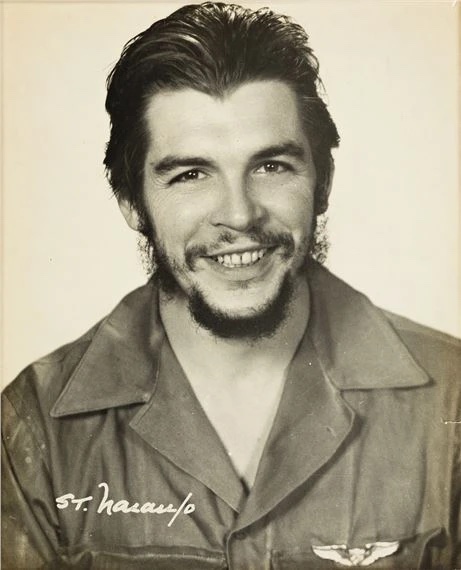
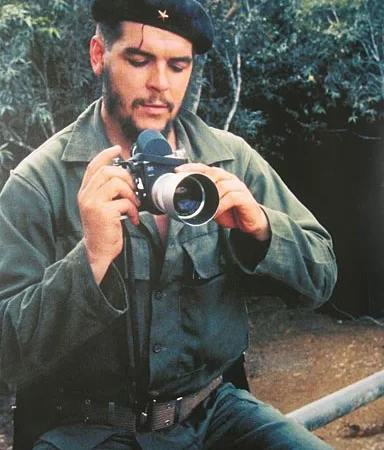

Very beautifully written by the time of year again